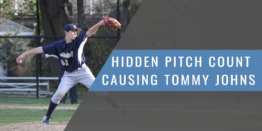|
5 Steps to Improving Your Batting Skills By: Brian Smith Provided by: STACK
All athletes who participate in our training program or on our team understand that to improve their baseball and softball skills, they must nail down a process that works for them. So when they step up to the plate, rather than focusing on a goal of "I need to get a hit," they concentrate on a process to have a good at-bat. Jennifer Hunt, a former college softball player and current softball coach for Assumption High School in Louisville, Kentucky, sums this up perfectly. She says, "I see so many players get too caught up on the results and the outcome. The focus should always be on the process. The game is full of too much failure to only judge progress in the results. Stick to the process and believe in it. Focus on the details of the process, and positive results will come." Steve Springer, a performance coach for the Toronto Blue Jays, agrees that focusing on a process is key to success. In the book The Mental Game VIP, he outlines a five-step hitting philosophy he teaches his hitters: slow feet, quick hands, quiet head, tall backside and attack the inside of the ball. Slow Feet
When a hitter is completing the load and stride phase of a swing, his/her front foot should be completely up and down before the swing begins. The front foot should be slow and controlled for the hitter to be on time and balanced when starting the swing. Quick Hands
The hitter must have quick hands to drive the ball. The bat speed and contact point will determine the exit velocity of the ball. The quicker you move your hands through the ball, the harder and/or farther it will travel. Quiet Head
By "quiet," I mean it does not move too much. The hitter should maintain a still/quiet head as the swing begins. For example, if your stride is eight inches, your head should move forward no more than four inches so you can maintain balance throughout the swing. Tall Backside
A tall backside describes the back shoulder as the hitter begins to swing. The backside should stay as tall as possible to drive through the ball. On low-and-away pitches, the back shoulder will go "down" to get the hands through the ball. If a hitter has trouble keeping his/her backside tall, he/she will not be able to hit line drives, which is the ultimate objective of each at-bat. Attack the Inside Part of the Ball When the hitter begins his/her hand path to the ball, the barrel of the bat should make contact with the inside part of the ball, out front. If this happens the ball will "jump" off the bat. If the hitter goes around the ball, his/her top hand will roll over too early and cause the hitter to "mis-hit" the ball. Good At-Bats Throughout the summer, our hitters have more productive at-bats with this approach. We post a checklist over our lineup card enumerating what constitutes a quality at-bat. Achieving any one of the following results is considered a good at-bat. 1. Hard Hit Ball
|










